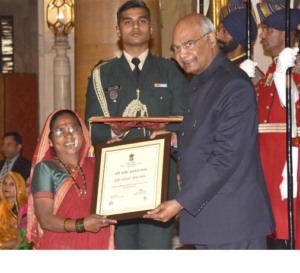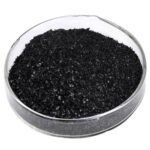What is Agricultural Biodiversity
“Agricultural Biodiversity”
An Agricultural Biodiversity in real sense is the wide variety of crops and their wild variants, trees, animals, microbes and other species adding to agricultural production. Diversity is the result of many years (hundreds or even thousands) of interactions between “people and the environment”. This is the key component of healthy diets and human health.
Agricultural Biodiversity plays an important role in fighting nutritional deficiencies and diseases related to diet. Intake of variety of foods that are rich in nutritional value provide adequate amounts of vital nutrients that are essential for human health. When we look at factors contributing to agricultural production, agricultural biodiversity is one such factor that supports long-term productivity, resilience and various ecosystem services, enhancement of yields in quality and quantity, enhancement of soil and water quality, and reduction in harmful chemical fertilizer need.
Agricultural Biodiversity has the following 3 levels:
1. Genetic Diversity
2. Species Diversity
3. Ecosystem Diversity
Agricultural Biodiversity contributes to food and agriculture and is generally categorized by the contribution to ecosystem services. Well-functioning ecosystems (Agro ecosystems and wild ecosystems like forests or grasslands) are important to human wellbeing. They fall under following categories:
1. Provisioning (direct provision of goods such as food and water)
2. Supporting (the services that are needed for agriculture to be healthy, such as soil)
3. Regulating (regulating natural processes needed in agriculture such as pollination, carbon capture or pest control)
4. Cultural (recreational, aesthetic and spiritual benefits). In this context Makar Sankranti, Pongal, Baisakhi and Lohri are the popular harvesting festivals celebrated through parts of India.
Agricultural Biodiversity contribution:-
Agricultural Biodiversity strengthens the livelihoods of farmers, reduces yield losses due to climate change and/or pest damage. Increasing the types of cultivated plants turns out to be good for the environment, which increases the abundance of pollinators and beneficial insects and soil organisms, and reduces the risk of pest epidemics. Agricultural biodiversity opens the new
options for unknown future needs, when conserved. This can happen in gene banks as well as on farms, where Agricultural Biodiversity is conserved by using it.

One such recent example is of “Padma Shree” Rahibai Soma Popere, a farmer from Maharashtra and conservationist. She helps other farmers return to native varieties of crops, preparing hyacinth beans for self-help groups. She is popularly known as SEED Mother for conserving indigenous seeds who is also associated with BAIF Development Research Foundation, a Core Support Group of Department of Science & Technology (DST). She has been conferred fourth highest civilian national award “Padma Shree” for her contribution in the field of agriculture.

Agro-biodiversity:
Through her experiences, she realized that the conservation of Agro-biodiversity and wild food resources is the need of the hour to achieve seed sovereignty and nutritional security. She started a nursery of Blackberry and distributed them as a gift to members of the Self-Help Group (SHG). She then established a nursery of hyacinth bean seedlings, rice, vegetables, beans landraces and shared them with 210 farmers in 7 villages of Akola Block in Ahmednagar district. She also conserved and multiplied about 43 landraces of 17 different crops (Paddy, hyacinth bean, millets, pulses, oilseeds, etc.) by establishing an in-situ germplasm conservation center. She has also
established a perennial kitchen garden for house-hold consumption and year-round use.
Main consumption and causes of agriculture:-
The world mainly has consumption of mainly three crops – rice, wheat and maize; accounting for more than 50% of its plant-derived calories. Yield of these crops has reached the saturation stage. There are many substitute crops, which will complement these three crops, e.g., sorghum, quinoa and millets are best examples that grow in adverse difficult environments and contain high nutritious value and have the potential for yield increase. Food biodiversity is a source of high-nutrient species and varieties. There is a shortfall of fruit, vegetable, nuts and seeds production, which can be overcome by other wild variants of nutritious fruits, vegetables, nuts and seeds available in the forests or in traditional farming that are yet to be explored for availability to general public at large.
Agriculture has about 24% of global greenhouse gas emissions and it is the single largest user of fresh water on this planet. Agricultural biodiversity based solutions are at the core of Agro ecological practices for enhancing the production while reducing the pressure on the environment. Agricultural biodiversity is a source of species and varieties that are tolerant to varied climatic conditions including drought to flooding and extreme temperatures. By using biodiversity-centric solutions we can decrease emissions that contribute to climate change.
Agricultural land and field protection:–
Loss of agricultural biodiversity will result in losing the options to make our diets healthier and our food systems more flexible and sustainable. So by using and safeguarding agricultural and tree biodiversity we can certainly help in achieving multiple sustainable development goals and targets. Loss of terrestrial habitation and the vast expansion of agriculture has led to modern
environmental change, which is in fact biodiversity loss in itself. Agricultural land use beyond limits has led to the search for strong conservation strategies. Agricultural biodiversity conservation can be best achieved by restricting the rampant use of chemical fertilizers and pesticide applications. Here organic inputs come to the rescue of the mankind to save mankind from the harmful effects of chemical fertilizers and pesticides.
For More Visit: alligohorizon.com




 Previous Post
Previous Post Next Post
Next Post